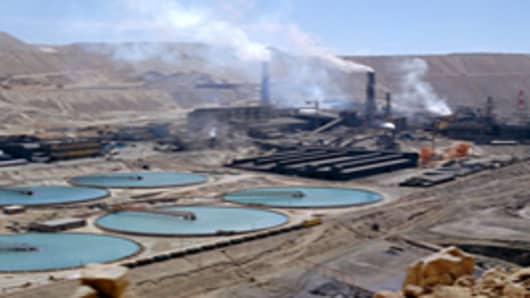The links between electronic devices such as smartphones and the bloody conflict in the Congo may to date have been largely invisible to most consumers. But a combination of increasing public pressure and a far-reaching new regulation in the US could well change this.
A fresh law, buried in section 1,502 of the Wall Street reforms passed last month, will force many manufacturers to overhaul checks on their supply chain in an attempt to identify any “conflict minerals” that can be traced back to the Democratic Republic of the Congo or adjoining countries.
Thousands of companies will be affected by the law. The Congo region is a widely used source of important industrial metals and minerals such as tantalum, copper, germanium, gold, manganese and cobalt. Tantalum, for example, is used in very small amounts in crucial electronic components such as capacitors, which find their way into everything from cars, to personal computers and mobile phones.
The existing practice of many manufacturers on relying on undertakings from their supply chain is unlikely to satisfy the law, due to be codified by the regulator, the Securities and Exchange Commission, before April.
“It’s not good enough for companies to just say their suppliers have told them that they don’t use conflict minerals,” Darren Fenwick, senior manager of government affairs at anti-genocide campaign group the Enough Project, said. “They need to undertake proper due diligence.”
That task of due diligence is not an easy one, given that the minerals pass through several stages – including a smelter process – between the mines and the assembly plant.
“Right now we cannot say we are conflict-free today to the level where we would be able to swear to it in an SEC filing. And no-one in the industry can – that is what we are working towards,” Chuck Mulloy, a spokesman for Intel, said.
The chipmaker said it was “working with other companies in the industry to establish a mechanism that will help us identify, verify and audit the source of the materials. In the long supply chain that can be somewhat problematic.”
Businesses stress that they support the aim of the disclosure provisions. “You don’t want to be providing funding to mines owned by people who are killing people,” Mr Mulloy said.
But industry groups warn that too onerous an audit requirement could deter companies from using the Democratic Republic of the Congo entirely, cutting off a financial lifeline to the region.
“Our priority is to source these materials legitimately, while developing the audit tools to allow suppliers to remain economically engaged in Africa,” Rick Goss, vice-president at the Information Technology Industry Council, said.
Campaigners argue that the process of implementing the law – due to take effect in 2012 – is an opportunity for manufacturers to head off a growing public relations headache.
“Companies recognize that this is a problem – here’s a chance for them to do something about it,” Mr Fenwick said.
The law does not ban companies from using conflict minerals – the final wording of the provision in the Dodd-Frank financial reform act is weaker than some lawmakers originally wanted. But enforced disclosure could be a forerunner to tougher sanctions.
“Many are watching to see if this provision would be the precursor for blood diamond-style penalties for companies that use conflict minerals,” said David Levine, a partner at law firm McDermott Will & Emery.
The American action is also likely to have a wider international effect. The disclosure requirement will affect companies listed in the US, even if their headquarters are elsewhere, drawing a number of Chinese, European and Latin American manufacturers within its scope.


